Chairs of Parallel Sessions
PLEASE NOTE:
Replace the string " AT " by "@" when using the email addresses below (an effort to avoid extra SPAM sent to those addresses).
Example: "smith AT myuniversity.com" becomes "smith@myuniversity.com"
|
 |
Felix Aharonian
Parallel Session: AP4 - Active Galactic Nuclei and gamma rays
Description:
The supermassive black holes harboured in active galactic nuclei are
at the origin of powerful jets which emit copious amounts of gamma-
rays. The exact interplay between the infalling matter, the black
hole and the relativistic outflow is still poorly known, and this
session will offer the most up to date status of observational
results with the latest generation of ground and space-based
instruments, as well as the theoretical developments relevant for
the field.
|


|
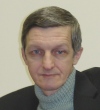 |
Georgy Alekseev
Parallel Session: MGAT1 - Integrability and Solution Generating Methods for Einstein's Field Equations in Four and Higher Dimensions
Description:
The session will be devoted to mathematical aspects of exact solutions with a focus on new developments and
various applications of solution generating methods based on the integrability of symmetry reduced Einstein's
field equations in General Relativity as well as in various string modified gravity models in four and higher
dimensions.
Now there is just about thirty years passed since the powerful solution generating methods (such as inverse
scattering approach and soliton generating techniques, B\"acklund or symmetry transformations, formulations
of auxiliary Riemann-Hilbert or homogeneous Hilbert problems and development of various linear integral equation
methods, all based on different features of integrability of symmetry reduced Einstein's and Einstein - Maxwell
field equations) had been discovered and got then many interesting applications. Recently some of these methods
were successfully applied for solving of symmetry reduced field equations for various gravity models in four
and higher dimensions. Without any doubts, further developments of these methods and there interesting
applications in General Relativity as well as in the low-energy effective string gravity models can be expected.
Therefore, it seems interesting to collect in the Session the previous experience, to identify the problems,
to discuss the directions of new developments and new possible applications of these methods.
Talks devoted to other mathematical aspects of constructing and analysing of exact solutions of Einstein's
field equations are also welcome.
|


|
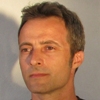 |
Giovanni Amelino-Camelia
Parallel Session: SQG6 - Quantum Gravity Phenomenology
Description:
Talks presented in this session will focus on the
possibility of finding experimental manifestations
of effects introduced at the Planck scale, relevant
for the study of the quantum-gravity problem
|


|
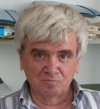 |
Vladimir Belinski
Parallel Session: SQG5 - Quantum Fields
Description:
This session is dedicated to the all aspects of the theory of quantum fields.
Special interest we will pay to the quantum fields in covered space-time and
to any results having applications in General Relativity
|


|
 |
Gennady Bisnovatyi-Kogan
Parallel Session: BHT3 - Black Holes and Magneto-Hydrodynamics
Description:
We plan to discus numerical models of the explosions of magnetized stars, including
simulations in GR; physical processes during accretion of a magnetized matter into a
black hole; jet formation during a collapse of magnetized stars, and outflows from magnetized
disks around black holes. The problems, related to observational properties of black holes will
be discussed.
|


|
 |
David Blair
Parallel Session: GW5 - Advanced GW Detectors
Description:
Status and Technology for the Next Generation of Advanced Gravitational
Wave Detectors including Advanced LIGO, Advanced Virgo, GEO, LCGT and AIGO.
|


|
 |
Luc Blanchet
Parallel Session: ANM1 - Post-Newtonian and Analytic Approximations
Description:
This session will cover all analytic approximations to GR, including:
post-Newtonian approximations for equations of motion and radiation field,
analytic approaches to self-force problems, BH perturbations with
applications to LISA sources, strong field tests of GR using gravitational
waves, analytic approximations in alternative gravity
theories.
|


|
 |
Dieter Brill
Parallel Session: MGAT3 - Theoretical Issues in GR
Description:
We will discuss a wide range of issues, focusing on the theoretical approach to relativistic problems
such as gravitation, gravito-electromagnetism, hydrodynamics, alternative theories.
|


|
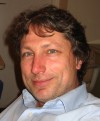 |
Martin Bucher
Parallel Session: OC3 - The Planck Mission and the CMB
Description: The aim of this parallel session is to discuss the physics
and astrophysics of the cosmic microwave background and in particular cosmology with
the Planck space mission.
|


|
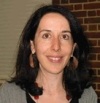 |
Alessandra Buonanno
Parallel Session: ANM3 - Interfacing analytical and numerical relativity
Description:
This session will focus on recent developments at the
interplay between analytical and numerical relativity
which have deepened our understanding of the two-body
problem in general relativity. The contributions should
cover topics in the areas of gravitational-wave theory,
data analysis, and astrophysics.
|


|
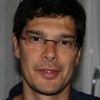 |
Sergio Campana
Parallel Session: GRB3 - Observations vs. theory in the Swift era
Description:
GRBs are powerful explosions in the local and distant Universe.
The BeppoSAX first and the Swift satellites later led to a revolution in
the observation of these objects discovering new phenomena and making
possible fast multi-wavelength follow-ups.
The aim of this session is to discuss and to bring together both
observers and theoreticians to bridge different views. We will focus on:
- X-ray flares and prolonged activity of the central engine
- Spectral evolution of the prompt emission and transition to afterglow
- Correlations and their implications
- Study of the circumburst medium
- Host galaxies
More info at: http://www.brera.inaf.it/utenti/campana/mg12_grb3.html
|


|
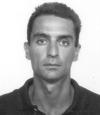 |
Salvatore Capozziello
Parallel Session: MGAT6 - Higher Derivative Theories
Description: Higher Order Theories of Gravity are recently assuming great relevance
from a theoretical and astrophysical viewpoints. Several models naturally come out from quantization schemes
on curved spacetime and address, without asking for unknown Dark Energy and Dark Matter, the cosmological
accelerated expansion and large scale structure issues in agreement with prescriptions of General Relativity.
|


|
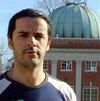 |
Vitor Cardoso
Parallel Session: MGAT7 - Gravitational Fields with Sources
Description:
This session will focus on exact solutions of the field equations
(Einstein's or alternative) sourced by physically interesting matter
distributions.
|


|
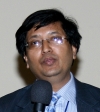 |
Sandip Chakrabarti
Parallel Session: APT4 - Astrophysical Black Holes: from Quasars to Nano-Quasars
Description:
The plan of this session is tentatively to have four to five review talks and about 10-12 contributed talks.
The subject matters will address the followings:
- So we really believe black holes exist and why?
- The most plausible mass (mass density) of the black hole in question and the spin determination.
- We will concentrate broader issues, such as universalities in hydrodynamic/radiative transfer
problems around black holes which are not central mass specific, but are solely depend on the properties
of space time around black holes.
- As such, we will encourage communities who work on stellar mass black holes (~few solar mass) to objects
like M87 (few Billion solar mass). Thus, in our nomenclature, from nano-quasars to quasars. Hence,
our galactic centre, intermediate mass black holes etc. are all included.
- Both spectral and temporal properties would be included.
|


|
 |
Gabriel Chardin
Parallel Session: AP1 - Search for Dark Matter
Description:
- Status of Dark Matter searches, direct and indirect
- Candidates for Dark Matter
|


|
 |
Pierre-Henri Chavanis
Parallel Session: MGAT9 - Self-Gravitating Systems
Description:
This parallel session is concerned with the dynamics and thermodynamics of self-gravitating systems.
This includes: statistical mechanics of the N-stars problem, kinetic theories
(Vlasov, Landau, Fokker-Planck...), stability analysis, gravitational collapse, phase transitions,
classical, quantum and relativistic statistics...
|


|
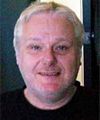 |
Alan Coley
Parallel Session: COT2 - Inhomogeneous Cosmologies, Averaging and Back Reaction
MGAT5 - Higher Dimensional Theories
Description COT2: This session will not only examine traditional approaches to inhomogeneous
cosmology such as exact solutions, but also the questions of averaging
the inhomogeneous Einstein equations in terms of backreaction on average
cosmological evolution, and the interpretation of observable quantities.
In particular, the debate about whether this may provide realistic
alternatives to homogeneous dark energy will be addressed.
Description MGAT5: In this sessions both the geometry of higer dimensional manifolds and exact
solutions and their interpretation in higher dimensional theories are considered.
|


|
 |
Spiros Cotsakis
Parallel Session: MGAT2 - Cosmological Singularities and Asymptotics
Description: We are interested in problems related to the existence and nature of cosmological
singularities as well as the long term asymptotics of cosmological spacetimes in a variety of currently
popular themes such as general relativity, higher derivative theories, braneworlds and string models.
The development of mathematical methods currently in use for such issues is itself of special interest
for this Parallel Session: Global causality theory, tensor methods, dynamical systems in finite and infinite
dimensions and asymptotic analysis.
|


|
 |
Thierry Dauxois
Parallel Session: MGAT10 - Chaos in gravitating systems
Description:
|


|
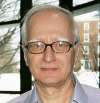 |
Marek Demianski
Parallel Session: COT1 - Topology of the Universe
Description:
Despite many attempts both theoretical and observational we still do
not know what is the topology of the Universe. This session will be
devoted to recent results that could finally clarify this
outstanding problem.
|


|
 |
Harald Dimmelmeier
Parallel Session: ANM5 - Supernova Explosions and Neutron Star Oscillations
Description:
This session will cover both numerical and analytical work related to
stellar core collapse as well as oscillations and instabilities of
neutron stars. Emphasis will be placed on work that is related to the
emission of gravitational waves either during a collapse or via other
transient mechanisms such as glitches, magnetar flares, LMXBs, etc.
|


|
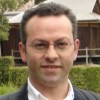 |
Giuseppe Dito
Parallel Session: SQG7 - Quantum Spacetime in Deformation Quantization and Non-Commutative Geometry
Description:
This session will focus on techniques
in deformation quantization and noncommutative geometry
relevant to gravitation and quantization problems in curved spacetime.
It will include such topics as perturbative theory on background spacetime,
QFT on deformed spacetime, black-hole quantization.
|


|
 |
Jean Eisenstaedt
Parallel Session: HR1 - Recent Advances in the History of General Relativity
Description: This session intend to offer a view of the recent historical
development of relativity. The contributions must offer new and historical insights on gravitation, general
relativity, cosmology, unified field theory. Historical topics include the prehistory of special relativity, early
attemps at a relativistic theory of gravitation, the beginnings of general relativity, the problem of motion,
conservation laws, the axiomatization of relativty, classical and contemporary cosmology, gravitation..., sociology
of relativity, as well as relativity as seen thought the eyes of the public and renowned relativists.
|


|
 |
Victor Flambaum
Parallel Session: EG2 - Variation of Fundamental Constants
Description: Space-time variation of fundamental constants from Big Bang to atomic
clocks: theory and observations.
|


|
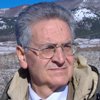 |
Filippo Frontera
Parallel Session: GRB3 - Observations vs. theory in the Swift era
Description:
GRBs are powerful explosions in the local and distant Universe.
The BeppoSAX first and the Swift satellites later led to a revolution in
the observation of these objects discovering new phenomena and making
possible fast multi-wavelength follow-ups.
The aim of this session is to discuss and to bring together both
observers and theoreticians to bridge different views. We will focus on:
- X-ray flares and prolonged activity of the central engine
- Spectral evolution of the prompt emission and transition to afterglow
- Correlations and their implications
- Study of the circumburst medium
- Host galaxies
More info at: http://www.brera.inaf.it/utenti/campana/mg12_grb3.html
|


|
 |
Dmitri Galtsov
Parallel Session: SQG1 - Strings/Brane Motivated Gravity
Description:
SQG1 covers various theoretical aspects of gravity models motivated by string theory:
- branes and other topological defects in model-building;
- large extra dimensions and TeV scale quantum gravity (ADD, UED, RS, DGP and alike);
- curvature corrected black holes and microscopic counting for the black hole entropy;
- space-time structure near Planck scale including non-commutativity
|


|
 |
Adalberto Giazotto
Parallel Session: GW2 - Operating GW Detectors
Description:
At present, the scene of the worldiwide Gravitational Wave detection
effort is mainly taken by the VIRGO-LIGO joint experiment. In this
session the results of the recent scientific run of both observatories
wil be reviewed, as well as news from the operating resonant-mass
cryogenic detectors in continuous operation.
|


|
 |
Berrie Giebels
Parallel Session: AP4 - Active Galactic Nuclei and gamma rays
Description:
The supermassive black holes harboured in active galactic nuclei are
at the origin of powerful jets which emit copious amounts of gamma-
rays. The exact interplay between the infalling matter, the black
hole and the relativistic outflow is still poorly known, and this
session will offer the most up to date status of observational
results with the latest generation of ground and space-based
instruments, as well as the theoretical developments relevant for
the field.
|


|
 |
Isabelle Grenier
Parallel Session: GRB2 - High Energy and GRBs, the Fermi Mission
Description:
|


|
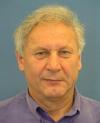 |
Leonid Grishchuk
Parallel Session: OC1 - Primordial Gravitational Waves and the CMB
Description:
The session will discuss all aspects of the generation of primordial
gravitational waves, their detection via CMB, and exciting science about the
early Universe that will be learnt upon their discovery. Contributions to the
session are invited. Hopefully, the outcomes of the discussion will be of much
significance for existing and forthcoming experiments, in which the actual
observation of primordial gravitational waves is expected to take place.
|


|
 |
Vahe Gurzadyan
Parallel Session: MGAT10 - Chaos in gravitating systems
Description:
The role of chaotic effects will be discussed in wide range of astrophysical and cosmological problems, including
the stellar atmospheres, long-range dynamics from planetary to galaxies, as well as in observational cosmology and
cosmological models. The variety of methods and descriptors of the chaotic dynamics, including in numerical studies,
will be particularly discussed.
|


|
 |
Hideki Ishihara
Parallel Session: MGAT8 - Alternative Theories
Description:
General relativity is definitely a beautiful theory of gravitation. However we may have alternative
approaches to explain all gravitational phenomena. We have also faced on some fundamental unknowns
in the Universe such as dark energy and dark matter, which might be solved by new theory of gravitation.
The aim of this parallel session is to discuss such alternative approaches for gravitation including
scalar-tensor, TeVeS, Einstein-Aether theories as well as string theory, higher dimensions, a brane world,
f(R), and higher-curvature correction.
|


|
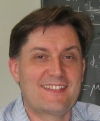 |
Philippe Jetzer
Parallel Session: OC4 - Observational Gravitational Lensing [Microlensing]
Description:
Topics of the session will be both observational and theoretical works on various aspects and applications
of microlensing and strong lensing: from dark matter detection to search for extrasolar planets.
|


|
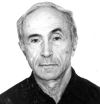 |
Iosif Khriplovich
Parallel Session: BHT4 - Black Hole Thermodynamics
Description: Temperature and entropy of black holes, classical and quantum. Radiation of black holes.
|


|
 |
Christian Klein
Parallel Session: ANM4 - Numerical Methods in General Relativity and Algebraic Computation
Description:
|


|
 |
Hagen Kleinert
Parallel Session: BHT1 - Strong Fields in Astrophysics
Description:
|


|
 |
Sergei Klioner
Parallel Session: EG4 - Astrometric Tests of Relativity
Description: This session will cover the relevance of astrometry as a tool to carry out
testing of General Relativity. Both ground-based and spaceborne technics
and projects will be addressed, with a particular emphasis on the pure
astrometry missions like the ESA Gaia and NASA SIM. The session will cover
both the methodology, modelling requirements, the implementation and the
expected performances together with more conceptual formulations of
astrometric observations and reference frame.
Additional information on the session is available at: http://astro.geo.tu-dresden.de/MG12
|


|
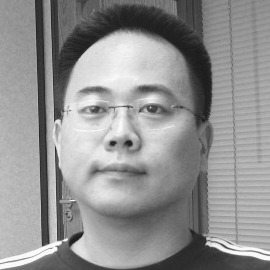 |
Shiho Kobayashi
Parallel Session: GRB4 - Models for GRBs
Description:
|


|
 |
Kostas Kokkotas
Parallel Session: ANM5 - Supernova Explosions and Neutron Star Oscillations
Description:
This session will cover both numerical and analytical work related to
stellar core collapse as well as oscillations and instabilities of
neutron stars. Emphasis will be placed on work that is related to the
emission of gravitational waves either during a collapse or via other
transient mechanisms such as glitches, magnetar flares, LMXBs, etc.
|


|
 |
Michael Kramer
Parallel Session: EG6 - Compact Binaries and Strong-Field Tests of Gravity
Description: This session will review, discuss and present methods and latest results
on the experimental tests of theories of gravity under strong-field conditions using binary systems,
such as binary pulsars. Experimental as well as theory talks addressing this and related issues are welcome.
|


|
 |
Jutta Kunz
Parallel Session: BHT2 - Black Holes in Higher Dimensions
Description: The focus of this session will be the presentation of various types of
higher dimensional black hole solutions and the discussion of their properties, including
stability, thermodynamics or production at LHC.
|


|
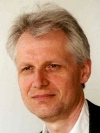 |
Claus Laemmerzahl
Parallel Session: EG1 - Tests of Local Lorentz Invariance
Description: Theoretical issues on and experimental as well as observational search
for violations of Lorentz invariance will be covered in this session,
including Standard Model Extension, modified dispersion relation,
Finsler space-times, etc., all possibly emerging from quantum gravity scenarios.
|


|
 |
Pablo Laguna
Parallel Session: ANM2 - Compact Binary Simulations: Spins and Gravitational Recoil, Comparisons with Post-Newtonian Results
Description:
The focus of this session will be the dissemination of results on
(1) the dynamics of black hole spins and the kick of the final black
hole in binary black hole simulations, including their implications
in astrophysics, and (2) the comparison of numerical relativity
results with post-Newtonian approximations.
|


|
 |
Jose Lemos
Parallel Session: MGAT7 - Gravitational Fields with Sources
Description:
This session will focus on exact solutions of the field equations
(Einstein's or alternative) sourced by physically interesting matter
distributions.
|


|
 |
Jerzy Lewandowski
Parallel Session: SQG2 - Loop Quantum Gravity, Quantum Geometry, Spin Foams
Description:
The session will review the results of Loop Quantum Gravity,
Spin Foam Models, and related approaches to quantum gravity.
The common theme is the background independent quantization of
Einstein's gravity and the occurrence of quantum geometry.
Among the subjects that will be discussed are: Loop Quantum Cosmology
models, quantum avoidance of the classical singularities, quantum
black hole entropy, QFT in quantum spacetime, techniques of solving
quantum constraints, the Dirac observables, background
independent quantization, relations with non-commutative geometry and
quantum groups, the new Spin-Foam models, Group Field Theory,
Dynamical Triangulations.
|


|
 |
Joshua Long
Parallel Session: EG5 - Short Range Gravity Tests
Description:
The focus of this session will be experimental tests of the inverse square law at laboratory scales and below.
These include torsion pendulum experiments sensitive to gravity in the range from microns to centimeters, and
experiments probing the distance regime down to a few nanometers and below, using techniques ranging from
scanning-probe microscopy to atomic and neutron interferometry. Theoretical presentations, describing possible
signatures of new physics in these ranges, are welcome as well.
|


|
 |
Kei-Ichi Maeda
Parallel Session: MGAT8 - Alternative Theories
Description:
General relativity is definitely a beautiful theory of gravitation. However we may have alternative
approaches to explain all gravitational phenomena. We have also faced on some fundamental unknowns
in the Universe such as dark energy and dark matter, which might be solved by new theory of gravitation.
The aim of this parallel session is to discuss such alternative approaches for gravitation including
scalar-tensor, TeVeS, Einstein-Aether theories as well as string theory, higher dimensions, a brane world,
f(R), and higher-curvature correction.
|


|
 |
Clovis Maia
Parallel Session: BHT6 - Analog Gravity
Description:
In recent years, analogies between gravitational scenarios (especially black
holes) and laboratory systems have been attracting increasing interest.
The study of these analogues provides deeper understanding and inspires new
ideas for both sides, condensed matter and (quantum) gravity - and
potentially (hopefully) facilitates experimental tests of the associated
predictions (e.g., Hawking radiation). This session will be devoted to new
developments in this interdisciplinary area.
|


|
 |
Jérôme Martin
Parallel Session: COM1 - Inflation
Description:
|


|
 |
Silvia Masi
Parallel Session: OC2 - CMB Experiments
Description:
|


|
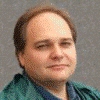 |
Mikhail Medvedev
Parallel Session: ANM8 - Collisionless Relativistic Shocks
Description:
Collisionless relativistic shocks are believed to occur in violent astrophysical phenomena
with large energy release, such as gamma-ray bursts, AGN jets, etc. The motivation for this
parallel session is the growing interest of the astrophysics community in recent remarkable
progress in understanding of the physics of these shocks: the role of the Weibel instability,
particle acceleration and electron heating, radiation production and the development of the jitter
radiation theory.
|


|
 |
Andrew Melatos
Parallel Session: GW1 - Sources of Gravitational Waves
Description:
The main aims of the session are: (1) to review recent
progress in source modelling; and (2) to explore ways
in which GW signals can be combined with source models
to answer fundamental questions in physics that cannot
be probed easily in terrestrial laboratories,
e.g. neutrino transport in ultradense environments,
nuclear equation of state, origin of superstrong
magnetic fields, and the like.
|


|
 |
Yannick Mellier
Parallel Session: OC5 - Dark Matter and Large-Scale Structure, Weak Lensing
Description:
The workshop will focus on the present theoretical and
observational status of weak gravitational lensing and its current
and future applications to cosmology.
In the context of the Marcel Grossman Meeting, we will pay special
attention on weak lensing and tests of deviations to general
relativity and modified gravity.
|


|
 |
Mariano Mendez
Parallel Session: APT2 - Extreme Properties of Neutron Stars: Observations and Theory
Description: Neutron stars are the most compact stars in the Universe; close to
their surface the gravitational field is extremely strong. Some neutron
stars spin very rapidly, and some harbour the strongest magnetic field
known in nature. Neutron stars are among the best candidates for sources
of gravitational waves, and are the heart of some of the most energetic
phenomena in the Universe (e.g., supernovae, gamma-ray bursts, soft
gamma-ray repeaters). In this session we will review some of the
extreme properties that are unique to neutron stars.
More info at: http://staff.science.uva.nl/~nrea/MG12/main_mg12.html
|


|
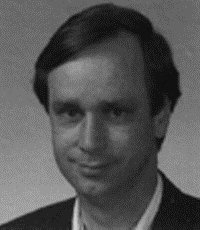 |
Peter Michelson
Parallel Session: GRB2 - High Energy and GRBs, the Fermi Mission
Description:
|


|
 |
Francois Mignard
Parallel Session: EG4 - Astrometric Tests of Relativity
Description: This session will cover the relevance of astrometry as a tool to carry out
testing of General Relativity. Both ground-based and spaceborne technics
and projects will be addressed, with a particular emphasis on the pure
astrometry missions like the ESA Gaia and NASA SIM. The session will cover
both the methodology, modelling requirements, the implementation and the
expected performances together with more conceptual formulations of
astrometric observations and reference frame.
Additional information on the session is available at: http://astro.geo.tu-dresden.de/MG12
|


|
 |
Paulo Moniz
Parallel Session: COT4 - Quantum Cosmology and Quantum Effects in the Early Universe
Description: In COT4 I propose, besides regular talks, to launch a discussion on selecting problems
in the manner of , eg, 7 challenges for XXIst century quantum cosmology (QC).
Basically, bringing QC closer to an 'observational' context as well as assisting in
the discussion of other lines or research (i.e, the problem of time or the string landscape).
In sumamry, an opportunity to (re-)introduce enticing problems to interested researchers.
|


|
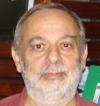 |
Mario Novello
Parallel Session: COT3 - Nonsingular Cosmology
Description:
This session deals with two broad lines of research:
a) Properties of the inflationary scenario
b) The behavior of the universe in the beginning of the present
expansion era, with emphasis in cosmological models without
singularity and/or cyclic universes.
|


|
 |
Elena Pian
Parallel Session: APT3 - Observations from High Energy Astrophysics Satellites
Description: APT3 summarizes recent results from high energy astrophysics observations
with the main focus on space based satellites and observatories. The
session primarily highlights observations from missions such as
CHANDRA, XMM-Newton, Suzaku, Swift, FERMI, and Integral which are
related to science involving strong gravity environments as found near
neutron stars and black holes but also gravity environments on large
scales such as clusters of galaxies. The session also includes science
programs proposed for future missions.
|


|
 |
Piergiorgio Picozza
Parallel Session: AP3 - Perspectives for Cosmic Rays from Space Missions: PAMELA
Description:
Aim of this session is to provide an updated overview on the scientific issues, implications and perspectives in the field of Cosmic Ray Physics,
Dark Matter and Solar Physics in the light of the recent results of PAMELA and other space and balloon missions and in view of the planned future ones.
The talks will cover presentations of the experimental results as well as theoretical and phenomenological interpretation and modelling.
|


|
 |
Tsvi Piran
Parallel Session: GRB4 - Models for GRBs
Description:
|


|
 |
Eric Poisson
Parallel Session: ANM7 - Self Forces, Black Hole Perturbations
Description: This session will be devoted to (i) the ongoing progress at formulating and computing (scalar, electromagnetic, and gravitational) self-forces acting on small bodies in curved spacetime; (ii) the applications of the self-force formalism to the modeling of gravitational waves emitted by extreme mass-ratio binaries; (iii) the ongoing effort to apply the theory of black-hole perturbations to interesting physical and astrophysical phenomena; and (iv) the new formulations of black-hole perturbation theory to higher-dimensional spacetimes.
|


|
 |
David Polarski
Parallel Session: COM2 - Dark Energy and Universe Acceleration
Description: This parallel session will be devoted to the study of nature and physical
properties of Dark Energy which produces the observed accelerated expansion
of the present Universe. It will cover the phenomenological reconstruction
of dark energy properties from observations, as well as consideration of
a wide variety of theoretical models aimed to explain existing observational
data, including those with interplay between dark energy and dark matter.
After several years of intensive theoretical and observational activity in
this field, an assessment of the current state of research along some
promising lines will be given.
|


|
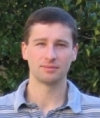 |
Frans Pretorius
Parallel Session: ANM6 - Compact Binary Simulations: Miscellaneous
Description: This session will allow dissemination of results on a host of issues
related to numerical simulations of black hole binary systems,
in particular those not addressed by parallel session ANM2
(Compact Binary Simulations: Spins and Gravitational Recoil, Comparisons with Post-Newtonian Results). Topics could include
the nature of waveforms from generic inspiral configurations,
gravitational wave detection strategies using numerical waveforms,
ultra-relativistic collisions, initial data for binary black hole
systems, and technical issues (such as gauge conditions or numerical
methods) that have particular bearing on the simulation of binary black
hole spacetimes.
|


|
 |
Nanda Rea
Parallel Session: APT2 - Extreme Properties of Neutron Stars: Observations and Theory
Description: Neutron stars are the most compact stars in the Universe; close to
their surface the gravitational field is extremely strong. Some neutron
stars spin very rapidly, and some harbour the strongest magnetic field
known in nature. Neutron stars are among the best candidates for sources
of gravitational waves, and are the heart of some of the most energetic
phenomena in the Universe (e.g., supernovae, gamma-ray bursts, soft
gamma-ray repeaters). In this session we will review some of the
extreme properties that are unique to neutron stars.
More info at: http://staff.science.uva.nl/~nrea/MG12/main_mg12.html
|


|
 |
Serge Reynaud
Parallel Session: EG3 - Space Tests
Description:
The session will be devoted to the space tests of General
Relativity. It will cover design, instrumentation, methodology and
modelling for future projects as well as decided missions.
|


|
 |
Fulvio Ricci
Parallel Session: GW4 - GW Data Analysis
Description: GW-4 parallel session of the MG-12 is devoted to statistical methods
applied to GW data analysis for all known type of gravitational wave
detectors. Also ideas of specific data analysis for future (planned)
detectors is in the sphere of session interest.
Particular attention is given to presentations with methods of
weak GW-signal filtering at the non-Gaussian noise background.
Also reports deal with a multi-channel detection or so called
Multi-messanges Astronomy will be greeted.
|


|
 |
Marco Ricci
Parallel Session: AP3 - Perspectives for Cosmic Rays from Space Missions: PAMELA
Description:
Aim of this session is to provide an updated overview on the scientific issues, implications and perspectives in the field of Cosmic Ray Physics,
Dark Matter and Solar Physics in the light of the recent results of PAMELA and other space and balloon missions and in view of the planned future ones.
The talks will cover presentations of the experimental results as well as theoretical and phenomenological interpretation and modelling.
More information at: http://pamela.roma2.infn.it/
|


|
 |
Sheila Rowan
Parallel Session: GW3 - Space and Third Generation GW Detectors
Description:
- Status and progress of space missions for detecting GWs; new technological solutions and achievements.
- Proposals and technological aspects of terrestrial GW detectors beyond the "Advanced" (second generation) versions of existing detectors.
|


|
 |
Valentin Rudenko
Parallel Session: GW4 - GW Data Analysis
Description: GW-4 parallel session of the MG-12 is devoted to statistical methods
applied to GW data analysis for all known type of gravitational wave
detectors. Also ideas of specific data analysis for future (planned)
detectors is in the sphere of session interest.
Particular attention is given to presentations with methods of
weak GW-signal filtering at the non-Gaussian noise background.
Also reports deal with a multi-channel detection or so called
Multi-messanges Astronomy will be greeted.
|


|
 |
Albrecht Ruediger
Parallel Session: GW3 - Space and Third Generation GW Detectors
Description:
- Status and progress of space missions for detecting GWs; new technological solutions and achievements
- Proposals and technological aspects of terrestrial GW detectors beyond the "Advanced" (second generation)
versions of existing detectors.
|


|
 |
Katsushiko Sato
Parallel Session: AP2 - Neutrino Physics, Astrophysics and Cosmology
Description:
|


|
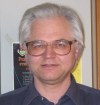 |
Gerhard Schaefer
Parallel Session: ANM1 - Post-Newtonian and Analytic Approximations
Description:
This session will cover all analytic approximations to GR, including:
post-Newtonian approximations for equations of motion and radiation field,
analytic approaches to self-force problems, BH perturbations with
applications to LISA sources, strong field tests of GR using gravitational
waves, analytic approximations in alternative gravity
theories.
|


|
 |
Ralf Schuetzhold
Parallel Session: BHT6 - Analog Gravity
Description:
In recent years, analogies between gravitational scenarios (especially black
holes) and laboratory systems have been attracting increasing interest.
The study of these analogues provides deeper understanding and inspires new
ideas for both sides, condensed matter and (quantum) gravity - and
potentially (hopefully) facilitates experimental tests of the associated
predictions (e.g., Hawking radiation). This session will be devoted to new
developments in this interdisciplinary area.
|


|
 |
Norbert Schulz
Parallel Session: APT3 - Observations from High Energy Astrophysics Satellites
Description: APT3 summarizes recent results from high energy astrophysics observations
with the main focus on space based satellites and observatories. The
session primarily highlights observations from missions such as
CHANDRA, XMM-Newton, Suzaku, Swift, FERMI, and Integral which are
related to science involving strong gravity environments as found near
neutron stars and black holes but also gravity environments on large
scales such as clusters of galaxies. The session also includes science
programs proposed for future missions.
More information are available at: http://space.mit.edu/home/nss/mg12.html
|


|
 |
Susan Scott
Parallel Session: MGAT4 - Exact Solutions (Physical Aspects)
Description:
In this session we will consider physical aspects of exact solutions of Einstein's equation and higher dimensional theories.
This will include all issues related to the global structure of these solutions, the physical interpretation of the solutions
and the analysis of their physical properties including symmetries and singularity structure.
|


|
 |
Kostas Skenderis
Parallel Session: SQG3 - AdS/CFT (Anti de Sitter/Conformal Field Theory)
Description: This session is devoted to recent developments in gauge/gravity duality.
The focus will be on foundational issues and applications of holographic
dualities.
|


|
 |
Alicia Soderberg
Parallel Session: GRB1 - Supernovae and GRBs
Description:
|


|
 |
Helene Sol
Parallel Session: AP4 - Active Galactic Nuclei and gamma rays
Description:
The supermassive black holes harboured in active galactic nuclei are
at the origin of powerful jets which emit copious amounts of gamma-
rays. The exact interplay between the infalling matter, the black
hole and the relativistic outflow is still poorly known, and this
session will offer the most up to date status of observational
results with the latest generation of ground and space-based
instruments, as well as the theoretical developments relevant for
the field.
|


|
 |
Alexei Starobinsky
Parallel Session: COM2 - Dark Energy and Universe Acceleration
Description: This parallel session will be devoted to the study of nature and physical
properties of Dark Energy which produces the observed accelerated expansion
of the present Universe. It will cover the phenomenological reconstruction
of dark energy properties from observations, as well as consideration of
a wide variety of theoretical models aimed to explain existing observational
data, including those with interplay between dark energy and dark matter.
After several years of intensive theoretical and observational activity in
this field, an assessment of the current state of research along some
promising lines will be given.
|


|
 |
Marco Tavani
Parallel Session: APT5 - Galactic Gamma-Ray Sources: steady vs. transient sources
Description:
|


|
 |
Marika Taylor
Parallel Session: BHT5 - Black Holes and the Information Puzzle
Description: This parallel session is centered around the so-called black-hole information paradox,
i.e. on whether one should -or should not- expect loss of quantum coherence in the quantum analogue of classical gravitational
collapse. Contributions reporting on different approaches to this problem are encouraged, in particular those based on black
hole microstate counting in string or loop quantum gravity, those using the AdS/CFT correspondence, and those based
on attempts to construct an S-matrix for transplankian-energy collisions of point- (or string)-like particles.
|


|
 |
Lev Titarchuk
Parallel Session: APT1 - Observations of Astrophysical Black Holes
Description:
Spectral and timing evolution of X-ray, UV, optical and radion emissions of Compact objects (black hole and neutron star)
Recently discovered the spectral index saturations vs mass accretion and QPO frequencies. Their applications to BH mass
determination and the distance to the sources. Observations of red-skewed lines in a number of CV, NS and BH sources.
Theory and models which can explain these observational facts. What are BH observational signatures?
|


|
 |
Pierre Touboul
Parallel Session: EG7 - Equivalence Principle Tests
Description:
In this parallel session, we would like to review the recently performed and future tests
of the Equivalence Principle. Laboratory tests as well as tests performed in microgravity
conditions or with space observations are considered. The dedicated instrument developments,
the experimental conditions and the specific data processing are expected to be presented in
regard to the performance analyses and obtained or foreseen results.
|


|
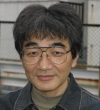 |
Kimio Tsubono
Parallel Session: GW5 - Advanced GW Detectors
Description:
Status and Technology for the Next Generation of Advanced Gravitational
Wave Detectors including Advanced LIGO, Advanced Virgo, GEO, LCGT and AIGO.
|


|
 |
Gabriele Veneziano
Parallel Session: BHT5 - Black Holes and the Information Puzzle
Description: This parallel session is centered around the so-called black-hole information paradox,
i.e. on whether one should -or should not- expect loss of quantum coherence in the quantum analogue of classical gravitational
collapse. Contributions reporting on different approaches to this problem are encouraged, in particular those based on black
hole microstate counting in string or loop quantum gravity, those using the AdS/CFT correspondence, and those based
on attempts to construct an S-matrix for transplankian-energy collisions of point- (or string)-like particles.
|


|
 |
Jan-Willem van Holten
Parallel Session: SQG4 - Perturbative and Non-Perturbative Aspects of String Theory and Supergravity
Description: The aim of this session is to present the recent progresses on
fundamental aspects of string perturbation theory, and compactifications on non trivial backgrounds.
|


|
 |
Pierre Vanhove
Parallel Session: SQG4 - Perturbative and Non-Perturbative Aspects of String Theory and Supergravity
Description: The aim of this session is to present the recent progresses on
fundamental aspects of string perturbation theory, and compactifications on non trivial backgrounds.
|


|
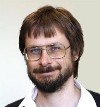 |
David Wiltshire
Parallel Session: COT2 - Inhomogeneous Cosmologies, Averaging and Back Reaction
Description: This session will not only examine traditional approaches to inhomogeneous
cosmology such as exact solutions, but also the questions of averaging
the inhomogeneous Einstein equations in terms of backreaction on average
cosmological evolution, and the interpretation of observable quantities.
In particular, the debate about whether this may provide realistic
alternatives to homogeneous dark energy will be addressed.
|


|
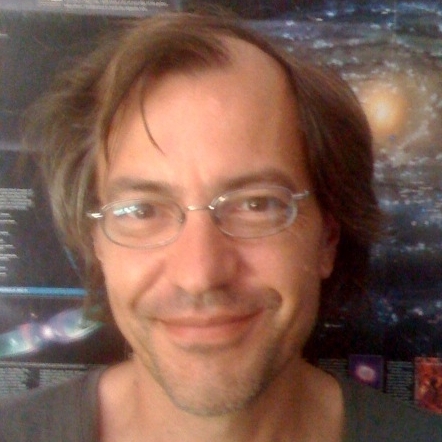 |
Jean-Pierre Zendri
Parallel Session: GW2 - Operating GW Detectors
Description:
At present, the scene of the worldiwide Gravitational Wave detection
effort is mainly taken by the VIRGO-LIGO joint experiment. In this
session the results of the recent scientific run of both observatories
wil be reviewed, as well as news from the operating resonant-mass
cryogenic detectors in continuous operation.
|


|





























































































